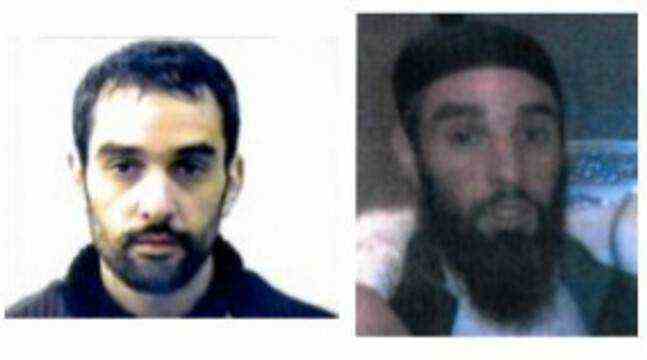We don’t judge the dead. It is even a fundamental principle of French law. In recent years, however, convicting ghosts has become the daily routine of magistrates specializing in terrorism. Since some jihadists have tried to pass themselves off as dead to deceive the vigilance of the intelligence services, a decision has been taken to try, in the absence of irrefutable evidence, those for whom doubt – no matter how small – remains. And the trial of the attacks of November 13, which opens this Wednesday before the specially composed Assize Court, is no exception to this rule: among the 20 accused, six are missing. One of them is detained in Turkey, a second still at large but the other four are, according to the intelligence services of several countries, dead in Syria.
If they will not be there to defend themselves, claim their involvement or deny it, or give their version of the facts, their shadow will hang over these nine months of hearings. Starting with that of Osama Atar, whose name resonates almost on every page of the investigation file, the only one, among all the accused, to be tried for “leading a terrorist enterprise”. This Belgian-Moroccan, a priori killed by a drone in November 2017 at the age of 33, is suspected of having planned and organized, from Syria, the attacks of November 13. “He was the head of the external operations unit,” specifies Jean-Charles Brisard, president of the Terrorism Analysis Center (CAT). He had a role of chief attack planner, responsible for assembling a team of combatants, ensuring logistics, supervising operations. “
Jihad veteran
The man is far from being a stranger to the intelligence services. Left to fight the American troops in Iraq in 2004 when he was barely of age, he spent seven years in American jails there. “It is precisely this role of jihad veteran that allowed him to climb to the top of the Islamic State ladder,” says the researcher. In Iraq, he met those who would become the main figures of the organization, including Abu Bakr al-Baghdadi, ”the self-proclaimed leader of the terrorist group until his death in 2019.
From the end of 2014, Osama Atar surrounded himself with trusted men responsible for the logistical and operational aspects of the attacks. Starting with his cousins, the El Bakraoui brothers, whose intelligence services are convinced that he himself worked to radicalize them, during a brief stay in Belgium in 2012.
The two men are his relays in Europe. From the Brussels region, they search for weapons, rent some of the cars and hideouts which will be used to transport and accommodate the commandos. In Syria, the Emir also relies on two experienced compatriots: Najim Laachroui, who has good knowledge of explosives, and Abdelhaamid Abaaoud, the operational chief of the Paris attacks. The latter is the only one to be in France, on the evening of November 13, opening fire on Parisian terraces, before blowing himself up during the Raid assault in Saint-Denis two days later. His three accomplices, who remained in Belgium, will commit the attacks in Brussels five months later.
The Clain brothers, knowledgeable “voices”
If Oussama Atar leaves his lieutenants a certain latitude, in particular in the choice of “targets”, assures him a role of logistician: he participates in the recruitment of some of the commandos, helps them, in particular financially, throughout their journey. in Europe, provides them with false papers… It also involves several high-ranking members of the organization, in particular Jean-Michel and Fabien Clain, known as the “voices” of the attacks for having claimed responsibility for them.
“The Clain brothers do not only have a propaganda role, they had precise knowledge of these attacks,” continues Jean-Charles Brisard. In their message of claim of November 14, they evoke a suicide bombing in the 18th which did not finally take place, which suggests that the message was carried out before the attacks. These Reunionese appear before the Assize Court specially composed for “complicity” in the crimes committed in Paris and Saint-Denis. But they will not be in the box either: they were, according to the intelligence services, killed in February or March 2019 during the siege of Baghouz.
The trial of the “little hands”
Therefore, in the absence of the thinking heads of the network, will this trial be that of the “little hands”? This is what some civil parties fear, starting with Arthur Dénouveaux, the president of the association of victims Life for Paris. “Everyone is talking about a trial for history but, in the box, we do not have decision-makers, we have rather rascals gone to seed. Some journalists hope it will be their Nuremberg or their Papon trial… I’m not sure. “
A reflection not shared by the president of the Center for Terrorism Analysis, who recalls that these attacks required an unprecedented logistics chain without which they could not have been perpetrated. “There are still many gray areas on the roles of each other in the organization of these attacks that the trial could clarify”, specifies Jean-Charles Brisard. And remember that among the 14 people who will actually be tried, ten are accused of “complicity” in the crimes committed.

